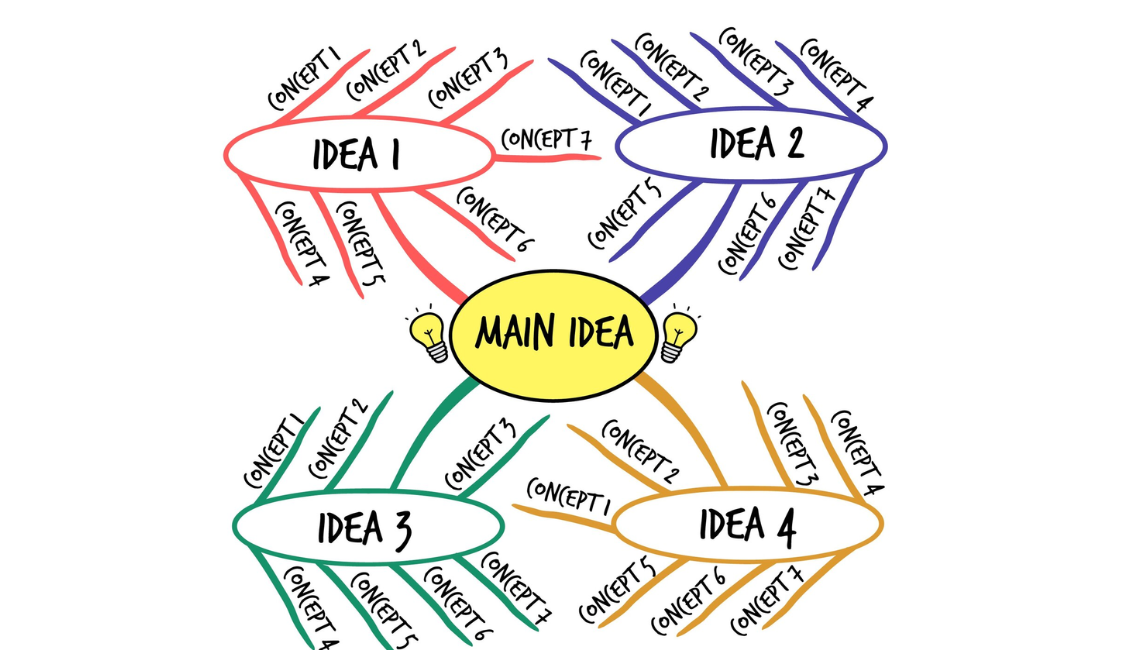Competitive examination such as the UPSC also demands not only hard preparation but also intelligent preparation. Mind mapping and note-making are some of the best study strategies because they have been identified as effective in enhancing the comprehension, memorization, and simplification of complex issues. We shall look at how these visual learning tools can be used to ensure that students are better placed to remember information up to 10 folds.
What Is Mind Mapping?
A mind map is a diagrammic image linking concepts of a core subject. It enables your brain to sort the information in a manner that reflects the way of thinking found in nature. Mind maps are used to illustrate relationships between concepts instead of reading long paragraphs or lists; colors, keywords and branches are used in place of reading.
The study of Indian Polity might have the central node of Constitution of India and the topics such as Fundamental Rights, Directive Principles and Amendments. Additional points, cases or examples could be included in each sub-branch. This framework enables the memorization of huge amounts of information by a single glance at the diagram by the students.
Why Mind Mapping Works
According to a research conducted by British Journal of Educational Technology, students who were using mind maps retained up to 32 percent of information compared to students using linear notes. This is since mind maps involve the two parts of the brain, the logical left and the creative right, thus forming stronger neural connections.
The following is the power of mind mapping:
-
Enhances memory: Visual presentation aids in long term memory.
-
Promotes creativity: The students are free to share ideas and this results in understanding.
-
Better organization: It introduces the whole subject in a nut shell.
-
Time saver: It is quicker to revise by using mind maps as compared to reading pages of notes.
The Art of Making Effective Notes
Although mind mapping is a visual technique, the basis of organized learning is that of note-making. Note-making is different to note-taking that merely transcribes information and entails explanation, summarizing and codification of ideas in your words.
Making notes are effective because they contain:
-
Prioritizing ideas - Do not concentrate on all words.
-
Bullet points and headings - This is employed to divide large texts into small manageable portions.
-
The inclusion of examples and dates - Particularly important when the topic of the UPSC is history or Current Affairs.
-
Checking the notes and memorizing them several times every day.
A research conducted at Cornell University was able to establish that those students who were able to take regular notes scored 20 percent better than those students who did not participate in taking notes on comprehension tests.
Mind Mapping and Note Making
A combination of the two methods will provide the best results. Write down all the notes in details and then convert them into a mind map to revise it. The process converts the heavy information to a visual snapshot. As an example, you may make a mind map of Economic reforms in India, on which you have prepared notes about the Economic Reform in India, but then you can have the Agriculture, Industry and Banking, and each of these will have the policies and outcomes of the reforms.
Conclusion
Mind mapping and taking notes are not only a tool of study, they are brain training techniques to allow students to think critically and memorize well. In Dhyeya IAS, applicants are advised to embrace these new ways of learning in order to enhance clarity of concepts and enhance memorization in the whole process of preparation.







